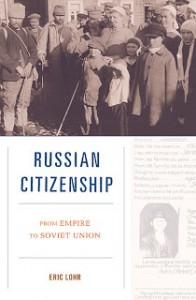Our panel of distinguished commentators have raised a number of very interesting points related to Eric’s book. Alison wonders whether the emotional aspect of citizenship and the decision where to live might well be worth additional consideration. Her post and Eric’s response highlight some methodological issues that confront researchers addressing these themes, but I think there is more to say on this issue. Students of nationalism and national identity have long tried to come to terms with the affective aspects of the phenomenon. I find myself wondering now more acutely how questions of citizenship intersected with nationalism on the “emotional plane.” This is a question not only for Eric, but for all of our blog readers.
Similarly, I am thinking much more about the question of economic autarky and physical borders as a result of the posts of Ari, Golfo, and Andrey. Ari suggests that the intensifying global restrictions on migration and citizenship in the interwar period might have played a role in Soviet practices of autarky. Golfo was struck, as I was, by Eric’s tale of the victorious police lobby in the early Soviet period and by the link between ascendant police forces and tighter border controls. Andrey, on the other hand, issued a thoughtful challenge to the very premise that the Soviets wanted to pursue autarky. He aligns himself with Michael Dohan’s argument that the decline in foreign trade was the result not of a Soviet intent to isolate their own economy, but from a collapse in exportable goods (such as grain) and the isolationism of Depression-era capitalist states. At the same time, Andrey warns us not to think of the increasingly militarized Soviet border as a means to enforce blanket restrictions on emigration but as a result of particular campaigns related to specific security concerns. He expresses doubts about consistent anti-foreign sentiments during terror campaigns as well and suggests that, much like Eric’s description of the imperial situation, these police-state measures were often “separate deals” as well.
We have a number of concepts floating around in time-sensitive relationships with each other: citizenship, nationalism, protectionism, autarky, capitalism, globalization, migration, and border, to name a few. Again, I would like to know if blog readers have thoughts on these issues, even if they have not yet had the opportunity to read Lohr’s book.
